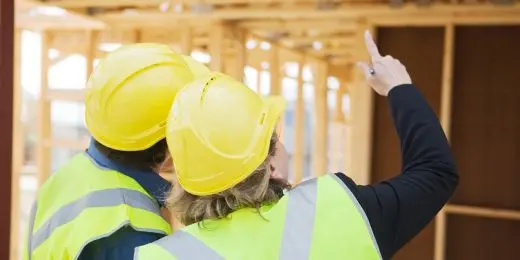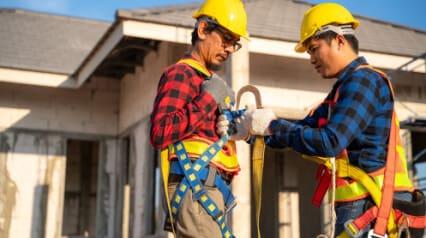What is Noise Awareness Training?
Noise awareness training is a workplace training program designed to inform employees about the impact of noise on their productivity, health, and well-being. By incorporating this into the safety program, workers can become more conscious of their environment and take measures to mitigate the effects of occupational hazards. This type of training is a must-have in industries where noise exposure is a concern, such as mining, manufacturing, construction, and aviation.
Defining Hazardous Noise
The world is filled with noise. While this is an omnipresent fact of life, it hurts one’s health, particularly when a person is inundated with it day in and day out. Too much of this hazard may cause the following:
- Permanent hearing loss
- Tinnitus
- Psychological stress
- Sleep disorders
- Loss of productivity
- Possible workplace accidents
The US Centers for Disease Control and Prevention (CDC) describes hazardous noise as intense, high-pitched, and intermittent. Based on that information, the US National Institute for Occupational Health and Safety (NIOSH) established the recommended occupational noise exposure limit (REL) of 85 decibels during an eight-hour shift. The agency has also suggested a hierarchy of controls to prevent or reduce exposure to noise in the workplace. One of these preventive controls is noise at work training.
Significance of Training for Noise Awareness
Practically all workers across industries are at risk of occupational noise exposure. Blasting in mining can go as high as 160dB, pneumatic tools like jackhammers reach 130dB, and even vacuum cleaners fall between 75 and 85 dB. All could cause grave health conditions, especially when people are subject to it daily.
A well-designed and planned noise awareness training campaign equips individuals with the knowledge and tools to manage and mitigate the impact of noise. Aside from safeguarding physical health, it also enhances concentration and focus, which is vital in the workplace and an advantage to the company’s overall productivity.
Components of the Training Campaign
The US Occupational Safety and Health Administration (OSHA) mandates that companies train workers exposed to noise based on NIOSH’s REL. The regulatory office also lists down topics that training managers should delve into. Here are some of those:
Noise in the Workplace
Workers should know how prevalent noise-induced hearing loss can be. Companies should be able to point out these hazards, particularly the source (e.g., practices and equipment). They should inform employees about the potential severity of this condition, as well as the specific short and long-term effects workers may face, and how occupational noise can affect their work and family life.
Basic Ear Anatomy and Physiology
Another topic that must be included in the noise training session is how hearing works. Knowing the anatomy and physiology of the ear helps workers understand how noise can be hazardous and, more importantly, how to protect themselves from noise-induced hearing loss.
Noise Levels
Workers should know how to measure noise levels and interpret the results. The most basic equipment is a sound level meter, which typically consists of a microphone and a screen showing the ambient sound in decibels. More high-tech gadgets include dosimeters and octave band analyzers.
Aside from this, the trainers should create a noise map and discuss it with the employees. This graphic representation of the problem area defines the zones or problems where workers need to wear protectors.
Specific Responsibilities
The next topic should outline the regulations that safeguard workers from excessive noise. It should specify the obligations of the company (e.g., conducting training, establishing controls, provision of PPEs, and providing hearing tests) and the crucial duties of the employees (e.g., attending training, following controls, and daily safety equipment checks) to eliminate, reduce, and mitigate the risk.
Control Measures
While this can be included in the specific responsibilities section of the program, this deserves to be a stand-alone subject because it details the various ways to control noise in the workplace. Common control measures different workplaces implement to protect workers from harsh noise levels include the following:
- Reducing noise at the source
- Managing engineering controls, such as building acoustic barriers around noisy equipment
- Implementing administrative controls, such asreducing the number of hours workers spend near the noisy equipment.
- Promoting the use of hearing Personal Protective Equipment (PPE) and specifically focusing on their attenuation, fitting, proper use, and care
Create Your Own Noise Hazard Identification Checklist
Eliminate manual tasks and streamline your operations.
Get started for FREEBest Practices for an Effective Noise Exposure Training
Aside from including the topics detailed above, the following should also be done to ensure that the program is a success, subsequently protecting the workforce from the consequences of hazardous noise:
- Conduct a thorough assessment of the noise levels in the workplace by identifying the sources and understanding their impact on the workers.
- Tailor the training content for specific roles and their sites by choosing the most suitable format and delivery (e.g., interactive workshops, e-learning modules, and on-site demonstrations) fit to their needs.
- Engage workers by conducting regular updates through daily toolbox meetings and reinforcement by conducting audiometric tests.
- Measure the impact of the campaign through post-training assessments and feedback.
- Leverage technology and noise monitoring sensors for all noise awareness training and hazard management workflows.
Companies can successfully integrate noise awareness into every process of their operations with the help of the SafetyCulture Training feature. Create courses and lessons from scratch, send assignments and feedback forms to employees to check knowledge retention, and schedule group seminars effectively through this highly-rated mobile-first platform. Take a look at how Bri-Stor Systems improved its overall culture of safety with the help of this software solution.




